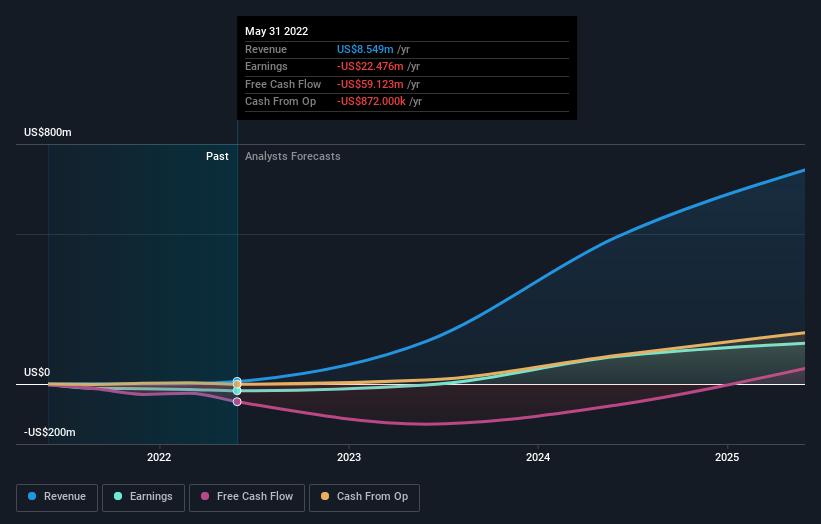Applied Blockchain, Inc.’s (NASDAQ:APLD) largest shareholders are individual investors with 31% ownership, insiders own 27%
If you want to know who really controls Applied Blockchain, Inc. (NASDAQ:APLD), you need to look at the composition of the stock register. We can see that individual investors own the lion’s share of the company with a 31% stake. Put another way, the group faces the maximum upside potential (or downside risk).
And individual insiders on the other hand have a 27% stake in the company. Institutions often own shares in more established companies, while it is not unusual to see insiders own a good number of smaller companies.
In the diagram below, we zoom in on the different ownership groups of Applied Blockchain.
See our latest analysis for Applied Blockchain

What does institutional ownership tell us about Applied Blockchain?
Institutional investors typically compare their own returns to the returns of a commonly followed index. So they generally consider buying larger companies that are included in the relevant benchmark.
Applied Blockchain already has institutions in the share register. They actually own a respectable stake in the company. This means that the analysts working for these institutions have looked at the stock and like it. But just like everyone else, they can be wrong. It is not unusual to see a large share price drop if two large institutional investors try to sell out of a stock at the same time. So it’s worth checking the past earnings trajectory of Applied Blockchain, (below). Remember, of course, that there are other factors to consider as well.

Hedge funds do not have many shares in Applied Blockchain. Cummins Family Ltd is currently the largest shareholder, with 19% of the shares outstanding. The second and third largest shareholders are Chen Guo and Xu Xin, with an equal number of shares of 7.9%. In addition, we found that Wesley Cummins, CEO has 3.8% of the shares assigned to their name.
We dug a little more and found that 8 of the top shareholders account for about 51% of the register, which suggests that along with larger shareholders there are a few smaller shareholders, thus balancing each other’s interests somewhat.
While studying institutional ownership of a company can add value to your research, it’s also good practice to examine analyst recommendations to gain a deeper understanding of a stock’s expected performance. There are a fair number of analysts covering the stock, so it can be helpful to find out their overall view on the future.
Insider ownership of applied blockchain
The definition of an insider may vary somewhat between different countries, but board members always count. The company’s management answers to the board and the latter must represent the shareholders’ interests. In particular, there are sometimes top-level managers who sit on the board themselves.
I generally consider insider ownership a good thing. But in some cases it makes it more difficult for other shareholders to hold the board accountable for decisions.
Our latest data indicates that insiders own a fair share of Applied Blockchain, Inc.. It has a market cap of just $194 million, and insiders hold shares worth $53 million in their own name. It’s great to see insiders so invested in the business. It might be worth checking if these insiders have bought recently.
General public ownership
The general public, which are usually individual investors, have a 31% stake in Applied Blockchain. While this group may not necessarily strike out, it can certainly have a real influence on how the company is run.
Private company ownership
Our data indicates that private companies own 19% of the company’s shares. It’s hard to draw any conclusions from this fact alone, so it’s worth looking at who owns these private companies. Sometimes insiders or other related parties have interests in shares in a public company through a separate private company.
Next step:
It is always worth thinking about the different groups that own shares in a company. But to understand Applied Blockchain better, we need to consider many other factors. For example, consider risk. All companies have them, and we have seen 3 Warning Signs for Applied Blockchain you should know about.
Ultimately the future is most important. You can access this free report on analyst forecasts for the company.
NB: Figures in this article have been calculated with data from the last twelve months, which refers to the 12-month period ending on the last date of the month in which the accounts are dated. This may not be consistent with the annual report for the entire year.
Do you have feedback on this article? Worried about the content? Contact with us directly. Alternatively, you can email the editors (at) simplywallst.com.
This article by Simply Wall St is general. We provide commentary based on historical data and analyst forecasts only using an objective methodology, and our articles are not intended to be financial advice. It does not constitute a recommendation to buy or sell shares, and does not take into account your goals or your financial situation. We aim to provide you with long-term focused analysis driven by fundamental data. Please note that our analysis may not take into account the latest price-sensitive company announcements or qualitative material. Simply Wall St has no position in any of the shares mentioned.
Join a paid user research session
You will receive one $30 Amazon Gift Card for 1 hour of your time while helping us build better investment tools for individual investors like yourself. sign up here

